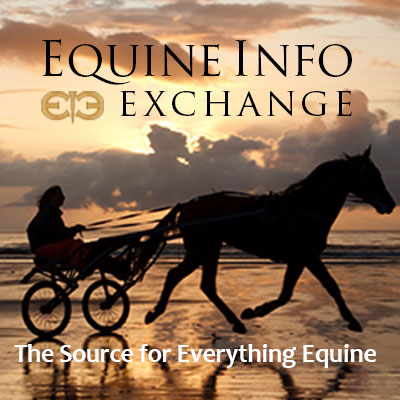
By Zoe Gillen and Heidi Lykins, Kentucky Equine Research Interns
In research settings, a standardized exercise test (SET) is a useful tool to assess a horse’s fitness. The test requires the horse to cycle through a succession of gaits using a standard protocol consisting of warm-up, exercise, and cool-down while wearing a fitness monitor. The test has been an incredible asset in many studies conducted at Kentucky Equine Research over the last four decades.
Researchers commonly use SETs to determine the effect of certain treatments or training methods on fitness and recovery. In research scenarios, SETs are usually carried out on a high-speed treadmill, as this enables exercise conditions, such as surface, incline, and speed, to be controlled.
During these tests, exercise intensity and duration are usually increased above the normal training levels, reaching speeds of 12 m/s (27 mph) and inclines up to 5°. This pushes the horse above the lower anaerobic threshold (160 bpm) and can result in significant increases in muscle temperature. The incline allows for both a higher intensity and duration of exercise without the need to increase speed. Exercising on the treadmill is especially beneficial in research as it allows us to control for confounding variables.
This is an example of an 18-minute SET used in a recent study with fit horses, in which researchers observed increases in muscle temperature up to 42° C.
1-min walk (1.6 m/s; 0° incline)
2-min walk (1.6 m/s; 3° incline)
2-min trot (4 m/s; 3° incline)
2-min canter (6 m/s; 3° incline)
3-min canter (6 m/s; 5° incline)
3-min fast canter (8 m/s; 5° incline)
2-min trot (4 m/s; 5° incline)
1-min trot (4 m/s; 3° incline)
1-min walk (1.6 m/s; 3° incline)
1 min walk (1.6 m/s; 0° incline)
Heart rate monitors are commonly used to determine fitness. A lower heart rate at any given speed indicates greater fitness. Another heart rate value commonly used is the velocity at which the horse’s heart rate reaches 200 beats per minute (V200). A horse with a higher V200 is considered more fit. At Kentucky Equine Research, heart rates are collected via smartphone apps that connect to a Bluetooth heart rate monitor, which is situated on a surcingle worn by the horse during exercise.
In addition, muscle temperatures are collected by scanning microchips implanted in the left middle gluteal and pectoral muscles using microchip readers. These muscles are specifically monitored as the middle gluteal muscle contributes significantly to forward locomotion during exercise, and the pectoral muscle is directly correlated with core body temperature.
Blood lactate is another fitness indicator used in research, with lower blood lactate levels translating to improved aerobic capacity and therefore greater fitness. These data can help researchers understand the level of fitness, observe recovery after exercise, and monitor progression over time to ensure effectiveness of training. To record the abundance of data from SETs, the researchers at Kentucky Equine Research created a data collection sheet, shown here with example data.
This article was written by Zoe Gillen and Heidi Lykins, year-long interns at Kentucky Equine Research. As part of the intern program, participants are asked to contribute to Equinews occasionally. Learn more about the internship program.
Reprinted courtesy of Kentucky Equine Research. Kentucky Equine Research is an international equine nutrition, research, and consultation company serving horse owners and the feed industry. Our goals are to advance the industry's knowledge of equine nutrition and exercise physiology, apply that knowledge to produce healthier, more athletic horses, and support the nutritional care of all horses throughout their lives. Learn more atKentucky Equine Research.
There a more informative articles in our section on Health & Education. While you're here be sure to visit our Curated Amazon Store.

































